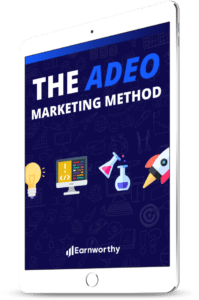As a business owner, you probably have a website up and running. People can come to your site to see what you have in store, and everything’s optimized and ready to go. That’s a pretty good way to run a business, especially in our digitized, 21st-century world. But, there’s always something you could do to make your business even better. In this case, we’ll be looking into an optimized website newsletter signup form.
While many business owners run their websites, not everyone has a newsletter signup form. But, these forms are actually quite important. They can help you to track your customers and engage better with them, and the forms will be important to your customer retention strategy.
In this post, we’ll look into everything you need to know about newsletter signup forms and how you can set one up to convert easily.
What is a newsletter signup form?
Today, Email marketing remains one of the best ways to increase your sales and grow your customer base. A report from DMA shows that Email marketing offers a return on investment of $55 for every dollar spent. Online businesses are still very much welcome to try Email marketing because it works.
To enjoy the best results from Email marketing, you need to build a mailing list. Over time, you will need more people to join the list and get your newsletter.
This is where the newsletter signup form comes in. These forms provide a way for people to voluntarily subscribe to your newsletters, so they can keep in touch with you and you can engage better with them.
A proper newsletter signup form offers several benefits, including but not limited to:
- Convenience: You can’t speak to everyone who patronizes your business. But, with a newsletter signup form, you can get their contacts and reach out to them when it’s convenient for you.
- Reach expansion: When more people sign up for your newsletter, you can expand your reach and grow your business. It’s all about getting more people to join your customer base.
- Building relationships: It’s great to get one-time buyers, but it’s even better to have recurring buyers. When people sign up for your newsletter, you can engage with them and nurture these relationships. So, you have a better chance of retaining these customers.
Creating a newsletter signup form
Now, to the meat of the article. If you’re looking to incorporate a newsletter signup form, here are the steps to follow:
Choose a marketing service provider
The first step for you will be to choose a marketing service provider. There are a lot of services that allow you to create signup forms and even build your newsletter from scratch. You can have your pick of the litter, but make sure to choose the right service.
For you, the right service provider will offer all the tools you need to create your signup form. The platform should be user-friendly, and you should also be able to enjoy all the features it offers. You should also have automation, impressive templates, and growth tools to help you improve your newsletter over time. Lastly, consider the price of the service and the customer support.
Get your contacts and design your newsletter
Once you select your marketing service provider, it’s time to get to work. Import your contacts into an Email list, and start working on the design.
The ideal marketing service provider will give your templates and a simple drag-and-drop interface that allows you to design your newsletter with ease. You can test different versions to ensure that you’ve got the right template on your hands. From there, send it out.
With this done, it’s time to understand some of the things that should be in your newsletter signup form:
Simplicity over complexity
When you’re creating a newsletter signup form, it’s important to keep simplicity in mind. Minimalistic designs are all the rage right now, and you need to also be able to incorporate that into your signup form. Design trends currently favor more simplicity than complex stuff. You should, too.
Most customers will prefer to work with brands that are honest and straightforward. Be clear in your messaging and design, and you’ll have a higher chance of converting your prospective customers. With a simple copy, your visitors will be able to hear your message and internalize it. You also need to keep in mind that most people have short attention spans. So, don’t let your copy be too long – just enough to convince them that they should sign up.
Keep a beautiful design
While we favor simplicity, we also understand the need for a beautiful design. Many believe that it’s impossible to combine beauty and simplicity, but this just isn’t true. The fact that you’re doing something simple doesn’t mean you should just have a plain white background with black text.
Why not spruce it up a bit?
The signup forms that convert the best are memorable and intriguing. You want to build that interest in your readers and get them to sign up for what you’ve got. Your design’s beauty will go a long way to help you in that regard.
A report from the Nielsen Norman Group shows that visitors really only need ten seconds to decide whether to sign up for something. So, your design needs to attract your customers and show them the value of your offering – all in ten seconds.
Get a clear call-to-action (CTA)
When creating a newsletter signup form, your text is just as important as the design. But, hardly does any piece of text matter more than the call-to-action (CTA).
The general rule of thumb is to create a clear, easy-to-identify CTA. get the right message in, so you can make your readers more confident to click on your offering. If you want that signup form to be effective, you need a CTA that will drive your point home and convince the readers of why they should go with you.
One of the best practices for you is to deliver an appealing story. Share your message in a few words, and make sure that you’re as clear as possible. An ideal CTA copy will include what the customers get when they join your newsletter contacts
Manage information well
When telling people to sign up for our newsletter delivery, you have to be careful about the information you ask for. Studies show that shorter signup forms have a higher chance of converting than shorter ones. So, only ask for the information that you need.
These days, people are more skeptical about giving their information out – especially to companies. The general belief is that these companies only sell the information eventually. So, assure your customers that you won’t.
If you have the space for the content, you could even tell them what you need the information for. Be open and honest, and you’ll find that your visitors will want to trust you more.
So, when it comes to information, remember the two most important things – only ask for what you need, and be clear about your intended use of the information you’re asking for.
Always use form validation
Form validation is another important component of a successful newsletter signup form. It will offer a way to know if your visitors are putting their information in the right way. It’s not so polite to make people wait until they’re done filling before they know that the data they entered is invalid.
With form validation, people know whether your date format is “dd-mm-yyyy” or “mm-dd-yyyy.” The same thing goes for the other fields. Do you want someone to write their surname first or their first name? Form validation tells them this in clear terms.
Test, test, test
As with everything else, you’ll need to test your newsletter signup form once you’re done with it. Carry out extensive tests and make sure that you have everything right to the T.
When testing, try to test one variable before another. This way, when you finally start seeing the increased conversions you want, you know what caused it and can implement even better updates.
Generally, we recommend that you test the following:
- Form length: No one wants to fill out overly lengthy forms. Cut the number of fields as much as you can.
- Phone numbers: People hate giving their numbers out. If you’re asking for it, tell the visitor why they’re submitting it and what you intend to use the numbers for. Remember that you need permission from people before you send them SMS messages.
- Intro: Test different intro copy variants to see which will convert better. Remember to explain what visitors stand to gain by subscribing to your newsletter.
- CTAs: Experiment with different CTAs. Test the wording, color, design, etc.
- Form location: You could place your signup form on a separate URL, embed it in an existing page, etc. know the right form type and stick with that.
- Social proof: If you will be using social proof, then try different ones. It could be a quote from a customer, a review screenshot, etc. It just needs to encourage the visitor to sign up, so choose the one that tests better and you’re good to go.
Here we go!
So, there you have it – your very guide to creating a newsletter signup form that will get people begging to be a part of your Email or newsletter list.
Remember to say more with less, be transparent, and test every component of the form before you publish it. Good luck!





